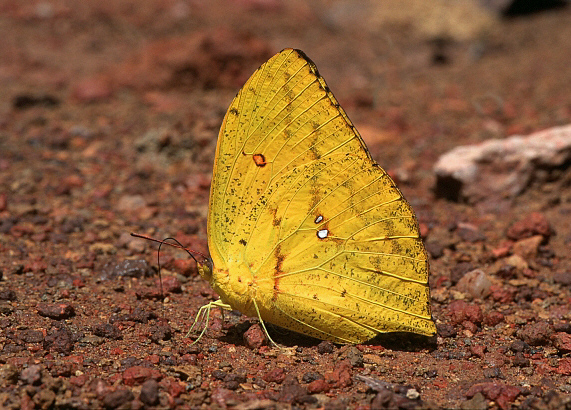
Phoebis rurina, or Phoebis neocypris (Phoebis rurina, or Phoebis neocypris)
Phylum — arthropoda
Class — insecta
Order — lepidoptera
Family — pieridae
Genus – phoebis
Appearance
The caterpillars are brownish having a green coating along the back and sides with a pale yellow lateral stripe.
The wingspan is 39–44 mm (1.5–1.7 in). Males are orange and females are whitish or yellowish. Both have a triangular extension on each hindwing. The underside is dotted with small gray-brown specks. There are small white dots on the hindwings, edged with a brown line.
Habitat
It is native to Mexico, Central America, and South America.
Behavior
Phoebis rurina demonstrates daily activity. Males are often found on wet ground, where they absorb moisture with minerals.
Adults are on wing all year round in Mexico and Central America. They are on wing in September in southern Texas.
Diet
The larvae feed on fresh leaves of Cassia species.
Adults feed on flower nectar of various flowers, including Lantana and Impatiens species.
Reproduction
For their reproduction you need a terrarium with a size of 50 x 50 x 70 cm. Eggs are laid in groups at the base of host plant leaves. The eggs are fusiform and yellow. It is better to keep the caterpillars in terrariums of 6-8 pieces, placing a pot with a forage plant in it. The temperature is 22-25 oC. Humidity 65-75%. The pupa is pale green. The duration of the pupa stage is 7-10 days. Butterflies live 5-7 days.
In captivity
The mesh terrarium with a size of 50 × 50 × 70 mm is suitable for keeping butterflies. Room temperature is necessary. Daylight time is 12 hours. You can feed the butterflies with honey syrup diluted with boiled water in a ratio of 1: 10.
 Russian
Russian
 English
English























